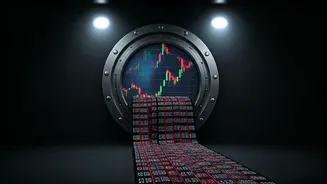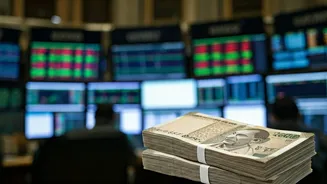Initial Expectations Soar
Lenskart's much-anticipated IPO was initially met with substantial enthusiasm. Pre-listing, the buzz was palpable, with investors and analysts anticipating
a strong market debut. The Grey Market Premium (GMP), an unofficial indicator of investor interest and expected listing price, was quite high, signaling considerable demand for the stock. This early optimism was fueled by Lenskart's established presence in the online eyewear market, its growth trajectory, and a positive outlook for the sector. The high GMP suggested that the company was expected to list at a premium, offering early investors a quick profit. The brand's successful expansion strategy and strong customer base also contributed to the bullish sentiment, with many anticipating that the IPO would be a lucrative investment opportunity, driving up demand before the official listing.
GMP's Sudden Collapse
The vibrant pre-listing enthusiasm for Lenskart's IPO was dramatically reversed when its GMP crashed to zero. This abrupt shift caught many off guard and raised immediate concerns about the company's valuation and market prospects. The GMP's decline indicates that the initial demand for the stock had significantly weakened, with expectations for a positive listing premium evaporating. This sudden collapse could be attributed to several factors. Market conditions, investor sentiment, and any new information or developments related to the company's financials or industry dynamics might have triggered this change. The absence of a positive GMP also suggested that the price at which the stock would list could be at par or possibly even below the IPO price, which significantly diminished the appeal for investors. The implications of this change became even more pronounced as the listing date drew closer, raising questions about Lenskart's ability to maintain its market position and attract long-term investment.
Factors Behind The Crash
The precipitous fall of Lenskart's GMP can be attributed to several critical factors that undermined investor confidence. Broader market volatility could have played a significant role, as fluctuations in the overall stock market can affect the performance of individual IPOs. Specific concerns related to Lenskart's financial performance or business model might have also come into play. Any negative news, such as a revision of revenue projections, increased operational costs, or changes in the competitive landscape, could have deterred potential investors. Moreover, the prevailing sentiment in the market, including any shifts in investor risk appetite, could have influenced the demand for the company's shares. A shift in the regulatory environment or government policies also might have added to the uncertainty. These elements, working in combination, led to the downturn in the company's market prospects.
Impact on Debut
The zero GMP had significant ramifications for Lenskart's market debut. It meant that the initial public offering was unlikely to see a premium listing, leading to a possible flat or negative opening on the stock exchange. The absence of initial gains reduced the enthusiasm of early investors. This also affected the overall perception of the IPO, potentially influencing the price discovery process and the stock's trading behavior in the short and medium term. A subdued opening could also create a ripple effect, impacting the interest of institutional investors and retail traders. Further, it posed challenges for the company's ability to raise capital and its overall market capitalization. Investors watching the IPO's performance might also have begun to reassess the company's long-term growth prospects, affecting its valuation in the long run. The immediate impact was thus a less favorable start to Lenskart's public journey, calling for strategic market and investor management.
Future Outlook Uncertain
Lenskart's future prospects after the GMP crash are now uncertain, hinged upon how the company manages its market entry and navigates the evolving landscape. The performance of the stock in its initial days of trading became critical, as it would shape investor perception and sentiment. The company's ability to meet or exceed its financial projections could be a key factor in restoring investor confidence and attracting long-term investments. Furthermore, Lenskart must effectively communicate its growth strategy and address any concerns raised by the market. This includes showcasing its competitive advantages, expanding its product offerings, and highlighting its innovation efforts. The external environment, including the overall economic climate and industry trends, would also significantly affect Lenskart's prospects. Whether the company can effectively adapt to these challenges and execute its plans would determine its success in the stock market.












